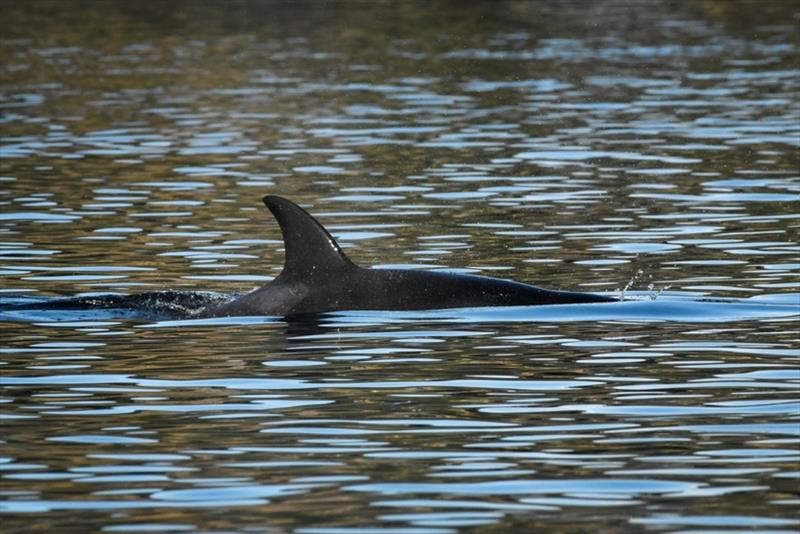
Biologists assess condition of Southern Resident killer whale J50
by NOAA Fisheries 11 Aug 2018 05:56 UTC

This photo of J50 was taken on July 21, 2018 © Katy Foster under NMFS permit #21368
Biologists, veterinarians, and other whale experts took stock on Thursday of what they know about the condition of J50, also known as Scarlet, the juvenile female Southern Resident killer whale that has been seen in poor condition. They also discussed what other information they need to inform next steps.
Sightings indicate that the whale is emaciated and is sometimes lethargic in the water, but still has periods of activity, including feeding. Analysis of a small sample of her breath did not definitively indicate an infection or illness, although it does not rule one out either. The scientists who have observed the whale agreed that she is in poor condition and may not survive.
Endangered Southern Resident killer whales are critically endangered, now numbering only 75 animals, the fewest in more than three decades. NOAA Fisheries has been working with partners to implement an action plan addressing the three main threats to the whales: availability of prey, vessel traffic and noise, and contaminants.
Experts agreed during a conference call on August 2nd to focus efforts over the next few days on obtaining better photographs of the whale and conducting a veterinary health assessment to better track her condition and evaluate a white patch behind her blowhole that may be a symptom of infection. They will also try to obtain fecal samples and possibly a breath sample if there is an opportunity, which could help identify the cause of her condition. That would better inform a decision on whether biologists could or should take any further action to help or treat the whale.
The experts on the call convened by NOAA Fisheries will confer again as new information is collected over the next few days. We will continue to provide updates as they are available.
Learn More